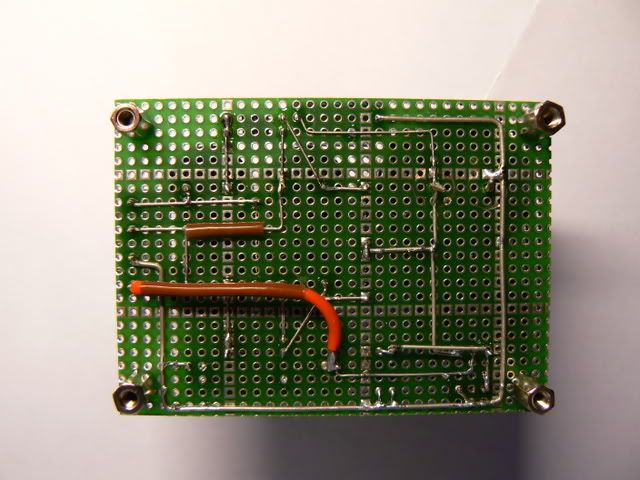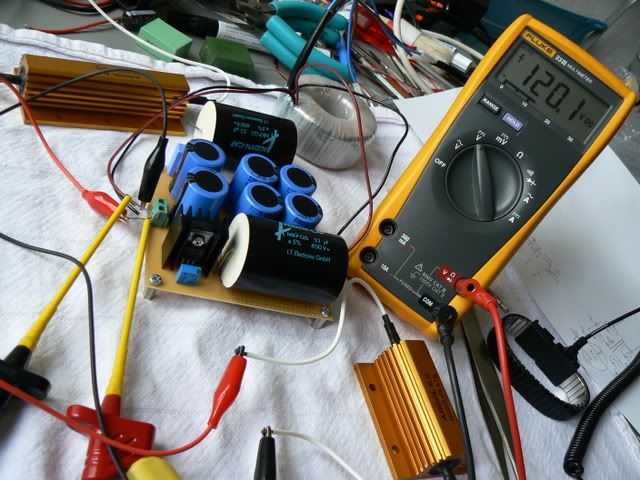- Joined
- Oct 10, 2002
- Posts
- 2,941
- Likes
- 1,422
Quote:
Hiss is pretty hard to see on the scope because it's just noise on the trace.
But, it's worth looking at the LV+ and LV- rails to see if there is noise on them. And then the base of Q5 and the O/P of the buffers. If there is visible noise on the traces then check whether it's larger at the O/P than it is at Q5. If it is, the buffer is introducing noise. If not the noise is coming from before the buffer.
The only way the buffer can introduce noise is either noise on the rails or just plain noise generation in the components. Every element in the circuit makes some amount of noise, especially the BJTs. But there are a few zillion O/P buffers out in the world and most of them don't create additional audible noise.
Edit: I missed Ferrari's post when I wrote this, but those are important things to check out too. And I see that Ferrari has already checked out the noise from the buffers and found it neglible.
| Don't have my ultrasensative M-Audio Q40 around to test with higher impedence, but I plugged in one of my 16-ohm IEMs (Crossroads MylarOne X3) which are quite sensitive as well and I have a hiss too. I don't notice it with my other sensitive cans, like the ATH-ANC7 and the K81DJ. I recall checking this with the old B+ (pre-HV) config, and I recall not noticing this, but that was also before casing when it was sitting out on my desk. I'll see what I can find out tomorrow, if I have time. I will try to isolate the buffers first. I have a scope, but my 200MHz probes are broken. I think I have some 400MHz probes around somewhere, but I haven't used my 400MHz unit plugin so I'm not sure if it's functional. If I can measure, I will. What would you like done? With the protoboards we have, we should just be able to disconnect the external HV perfboard as well, if you don't want to desolder C1/C2 and you put terminals on. At least, I think that'll work. Edit: I hear it with my DT660, but it's slight. |
Hiss is pretty hard to see on the scope because it's just noise on the trace.
But, it's worth looking at the LV+ and LV- rails to see if there is noise on them. And then the base of Q5 and the O/P of the buffers. If there is visible noise on the traces then check whether it's larger at the O/P than it is at Q5. If it is, the buffer is introducing noise. If not the noise is coming from before the buffer.
The only way the buffer can introduce noise is either noise on the rails or just plain noise generation in the components. Every element in the circuit makes some amount of noise, especially the BJTs. But there are a few zillion O/P buffers out in the world and most of them don't create additional audible noise.
Edit: I missed Ferrari's post when I wrote this, but those are important things to check out too. And I see that Ferrari has already checked out the noise from the buffers and found it neglible.





























